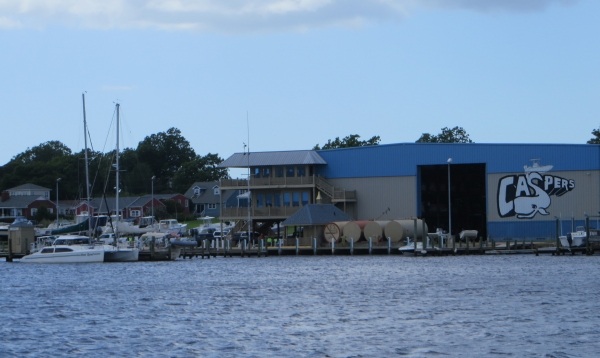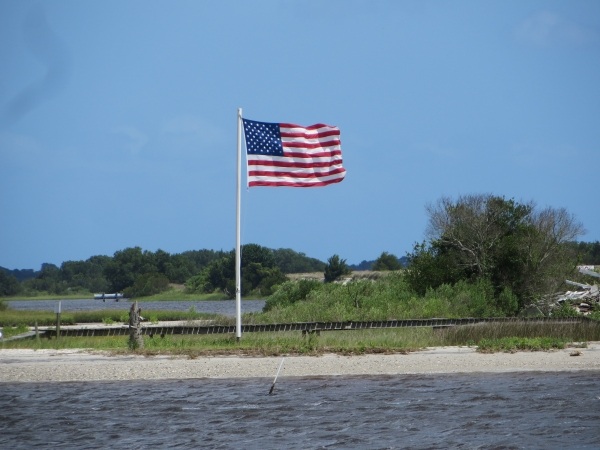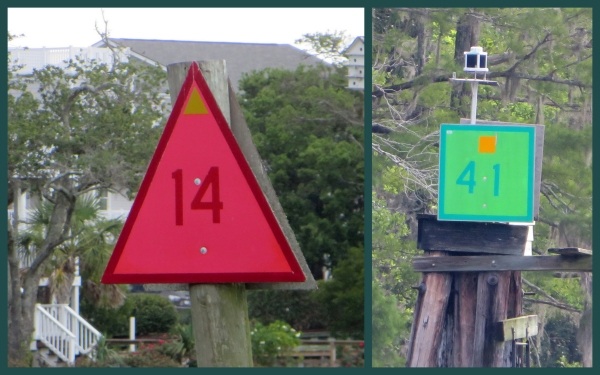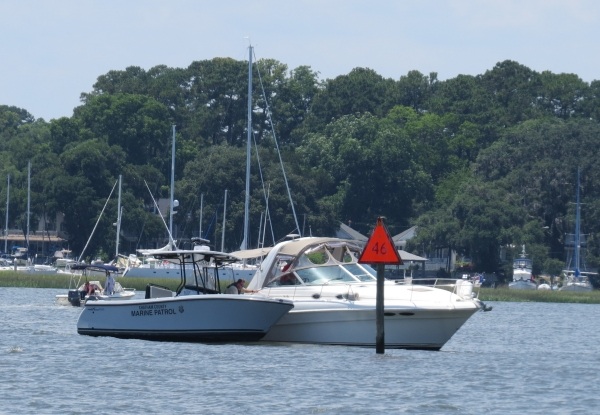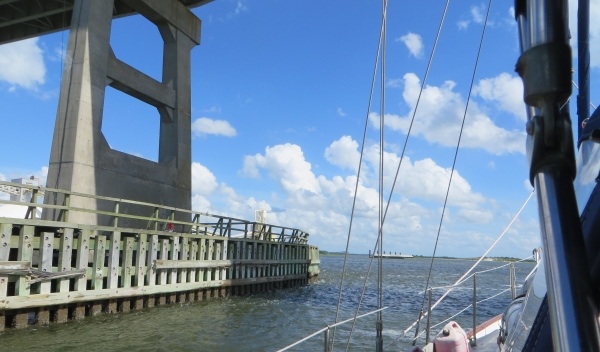Day 8 – 274 nm to go
Today was one of the more challenging days on the ICW. The lengthening days have been working to our advantage. We're up at 0515 and anchor up by 0545. We witness spectacular sunrise after sunrise. The rising tide gave us a good push this morning up the Cape Fear River. All was calm and we were on our way. Despite the shining sun, a long, compact, cigar-shaped roll cloud came into view in front of us, reminiscent of the roll cloud we experienced for the first time in the Great Australian Bight. Within seconds, nearly 30 knots of wind barreled through the rigging and pommeled us for 3-4 minutes, then departed as quickly as it had arrived, apparently planning to harass some other unsuspecting sailor down the river. A good morning, adrenaline rush of a wake-up call to start our day.

From the Cape Fear River, we transited Snow's Cut to the New River. One of the main bugaboos of today's passage was the number of opening bridges we had to deal with, all with differing schedules. Two bridges opened only on the hour and two opened on the hour and half hour. There wasn't time to coordinate openings from bridge to bridge, so there was a lot of waiting involved. We wasted a significant amount of time treading water waiting at one bridge, then we'd speed up to get to the next, only to be disappointed by missing the opening by a few minutes and waiting until the next opening. Boats don't stop. They float and drift around with the wind, current, wakes and waves and constant maneuvering is required to keep them in place. Staying put for a boat is akin to keeping an impatient toddler in place.

There was also constant shoaling along our route today, especially at inlets from the sea. Despite having foreknowledge from the Active Captain comments, we went aground at Masonboro Inlet. We were in the middle of the channel, but obviously got too close to the green side. (For non-sailors, red is the port (left) side and green is the starboard (right) side … at least when we're heading north up the ICW. Red and green markers indicate the position of the channel.) The sand was soft and David worked us free in a matter of minutes and we were on our way.
The second grounding came about an hour later and again at an inlet. This time the Mason Inlet was the culprit and getting off this sand was not as easy, especially since we were on a falling tide. It took us over 30 minutes of working back and forth and side to side before we found enough water to get off the grounding, out of the shallow area and back on track. Again, we were in the channel, but obviously just not in the right spot. Though challenging, time-wasting and frustrating, going aground in sand and mud is not that big a deal. The sand tends to scrape the barnacles off the keel, but not much more than that. If worse came to worse, we could have called Towboat US to which we subscribe. Many folks do, but the captain preferred to hone his “going aground extrication” techniques and this was a good opportunity. Again, no kedging off, no launching of the dinghy, but those ideas were ready if we needed them. We watched a young fellow poling his john boat through the shallows a little while later and we didn't feel so bad. They say “ it's not IF you go aground, it's just WHEN you go aground.”

The last of the bridges for the day was the Onslow Beach Swing Bridge. We timed it well for a change and passed through at 5:30pm. The US Marine training facility, Camp LeJeune, is in this area and from time to time live firing exercises are under way. At those times, the bridge is closed until the exercises are completed, usually several hours.

Lucky for us, all was calm at Camp LeJeune, though we did see some marines and military equipment on the shore.

The winds increased throughout the day. We saw a steady 20 knots by late afternoon. The forecast is calling for strong north/northeast winds along the coast and inland coastal waters, so we were looking for a protected anchorage in which to hunker down for a day or two, if necessary. At sea, 20-25 knot winds aren't a problem, but inland on narrow waterways with significant shoaling, the wind makes maneuvering a bit trickier.
Swansboro Village was our anchorage of choice. Literally just a few hundred feet off the ICW, we found a 15' spot with good holding just opposite the town dock. By the time we were settled in, the rigging was rattling and the wind was howling in the high 20s from the north. The temperature plummeted nearly 20 degrees to a wonderfully comfortable level. We were in need of a day off to catch up on writing and just relax a bit. We'll take advantage of this opportunity and blame it on the weather.




